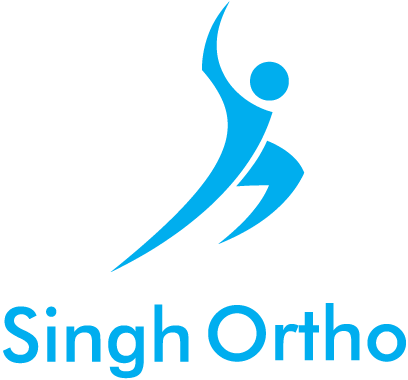Physical therapy (PT) is an exercise program that helps you improve movement, relieve pain, encourage blood flow for faster healing, and restore your physical function and fitness level. The main goal of physical therapy is to make your daily activities such as walking, getting in and out of bed, or climbing stairs easier. It can be prescribed as an individual treatment program or combined with other treatments. Physical therapy is usually ordered to help you recover after certain surgeries, injuries and long-term health problems such as arthritis.
A physical therapist will examine your symptoms and activity level, and create a treatment plan which primarily focuses on reducing your pain and swelling. The different procedures used by your PT depend on your specific physical complaints.
Bracing
Bracing is a nonsurgical, remedial therapy that uses a medical device called a ‘brace’ to provide support to unstable or misaligned joints or body parts.
The brace is usually made of plastic, metal, or other similar components and may be padded with synthetic rubber, foam, or other soft materials. It fastens and holds joints or body parts in the correct anatomical position.
Different types of braces are used depending on the clinical condition and the purpose to be achieved. A brace can be ready-made or customized to the patient.
When is Bracing Used?
Bracing is mainly used during:
- Management of musculoskeletal disorders
- Joint injury rehabilitation
- Joint injury prevention
- Osteoarthritic care
- Post-operative care
Purpose of Bracing
Bracing is predominantly used to:
- Immobilize your unstable joint
- Correct abnormal alignment
- Reduce pain and related issues
- Slow down the progression of the disorder
- Improve the physical function of the affected part
Bracing can also be used to treat a range of orthopaedic conditions such as:
- Knee disorders
- Shoulder or arm injuries
- Foot & ankle injuries
- Elbow disorders
- Hand and wrist injuries
- Hip disorders
- Sports injuries
Benefits of Bracing
Bracing, as a therapy, has several potential benefits. The most common being:
- No unwanted movement of the unstable joint
- Minimum stress and pressure on the affected joint
- Reduced swelling (through compression)
- Less or no pain and discomfort
- Improved balance and mobility
- Enhanced stability, better healing
- Protection from further injury
- Increased confidence during daily tasks
However, bracing can come with a few limitations such as discomfort due to added weight, skin breakdown due to chafing of the skin and redness or irritation.
Additionally, excessive or continuous use of bracing can lead to chronic pain and stiffness in your joints.
Modalities
Splinting
Splinting is a method of holding still and protecting a wounded body part from further damage using a rigid material called a splint. Splinting is often used to stabilize your broken bone and allow it to heal. It prevents the affected part from moving and decreases pain. Normally, splinting is for short-term use before advanced medical treatment.
Casting
Casting is a medical process used to support and protect fractured bones and joints using a ‘cast’, an orthopaedic device. The cast holds in place and immobilizes your injured bone as it heals. Casts are mostly made from plaster or fibreglass. Casts are also known to help prevent or reduce muscle contractions. Once applied, the cast needs to be kept clean and dry and placing pressure or weight should be avoided.
Slinging
Slinging is a rehabilitative technique where a flexible belt or strap known as ‘sling’ is used to support and keep still an injured part of your body. Though slings can be used for different injuries, they are extensively utilized for a broken (fractured) or dislocated arm or shoulder. A sling is mostly applied after a splint is placed.










